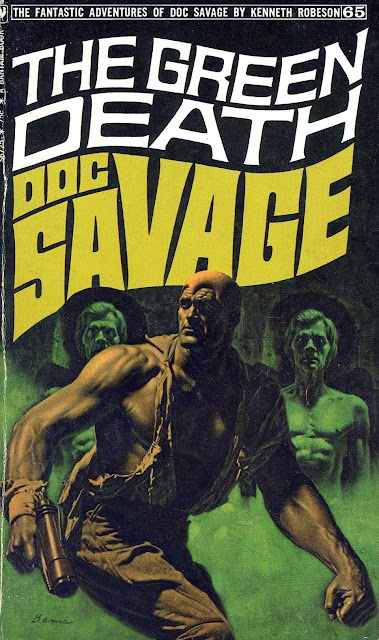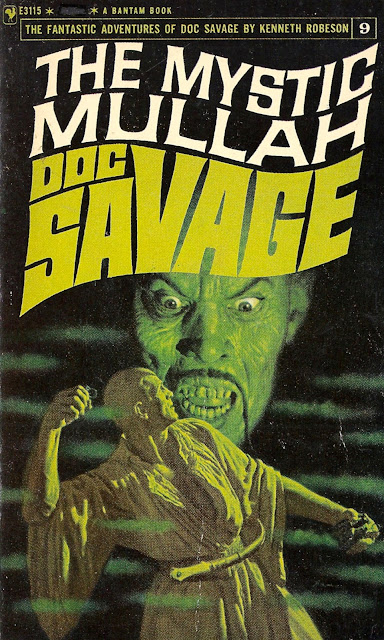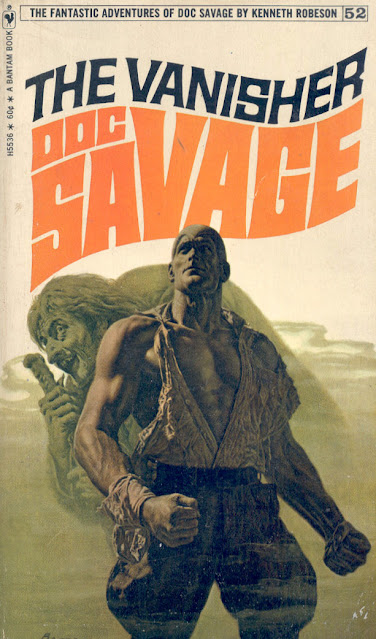 (Above) The Crown, by Francis Pollini (Bantam, 1968).
(Above) The Crown, by Francis Pollini (Bantam, 1968).
Before I began work on this tribute series to James Elliott Bama, who died on April 24 at age 95, I knew little about that New York City-born artist and paperback-cover illustrator. This stands in noteworthy contrast to how I’d started previous celebrations, whether of Robert McGinnis, Robert Stanley, or Ron Lesser.
I wasn’t aware that Bama was the second son born to Benjamin Bama, a Russian immigrant from Minsk, and Selma Sarah Abrams. I was ignorant of the fact that he had idolized Flash Gordon comic-strip creator Alex Raymond as a boy, and that he’d scored his first professional art sale at age 15, when he convinced the New York Journal-American newspaper to purchase his drawing of Yankee Stadium. I didn’t know that he met his wife, New York University art history major Lynne Klepfer, at a party, when he was scouting around for a woman to model for him as a nurse—the subject of his latest cover painting. I was unaware that Bama’s eyesight commenced
 to fail him in the early 2000s, leading to the end of his career after a half-century.
to fail him in the early 2000s, leading to the end of his career after a half-century.(Right) James Bama self-portrait, 1972.
Above all, I had no clue as to how long this Killer Covers tribute would run, or how many examples of his artistry I’d want to fit into it. As it turns out, the post you’re reading is the 26th installment—and the last. I’ve been showcasing Bama paperback fronts since the end of April.
Over that time, we’ve seen his influence on crime novels, on westerns, on horror yarns, and of course, on the Doc Savage series with which he is so widely associated. I chose not to showcase Bama’s work for men’s magazines, as Robert Deis has done such a splendid job of that in his own blog. (See here, here, and here.) However, I did recognize Bama’s popularization of white-background paperback fronts, and his painting for the first Star Trek novel.
This series could go on for another month; instead, I’ve decided to close with a galley of 30 additional James Bama fronts (below). Among these you’ll find his illustrations for the “trashy, exploitative” Messalina, by Jack Oleck (Dell, 1963); Philip Roth’s Letting Go (Bantam, 1967); Robert K. Massie’s Nicholas and Alexandra (Dell, 1969), one of my mother’s prized examples of historical non-fiction; “the paperback potboiler” The Trojans (Bantam, 1967), by Wirt Williams; Desmond Morris’ “landmark study of human behaviour and evolution,” The Naked Ape (Dell, 1969); and Jack W. Thomas’ Reds (Bantam, 1976), featuring one of my favorite Bama covers.
Also embedded here are six covers he did for Louis L’Amour novels, and four painted for books about Nazi activity in World War II.
Finally, I must acknowledge some of the sources of the art and information used in this series: Michael Stradford’s ever-enlightening blog devoted to model Steve Holland, who posed for many of Bama’s illustrations; Southern California bookseller/books historian Lynn Munroe’s Web site, especially his essential checklist of Bama paperbacks; Leif S. Peng’s Today’s Illustration Group Facebook page, and the wonderful blog Pulp Covers. If you go looking online for examples of Bama’s artistry, including his late-career paintings of western American subjects, there are plenty to enjoy.
Who knew?
Click on the images below for enlargements.




















































